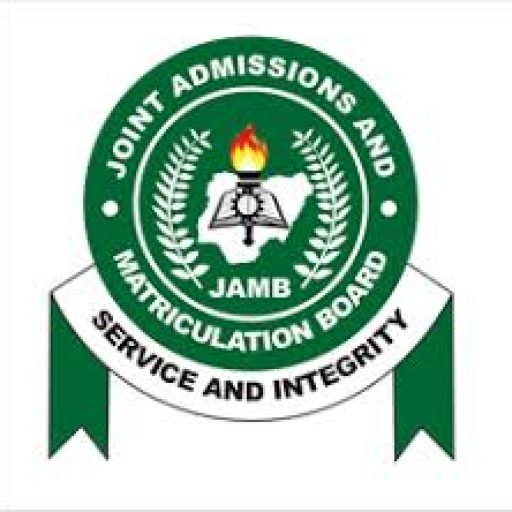
Starting the process of applying for the American Visa Sponsorship Program can be exciting but also overwhelming. This program offers many opportunities in the United States for people all over the world.
Whether you want to study, work, or be with family, it’s really important to understand how the visa sponsorship program works.
This guide breaks down the steps for applying to the American Visa Sponsorship Program, so you can be prepared and confident as you navigate this sometimes confusing process.
Understanding the American Visa Sponsorship Program
The American Visa Sponsorship Program is an important link for people outside the United States who want to live, work, or study in the country with the support of a sponsor.
This program offers different types of visas for various needs like reuniting with family, finding a job, or getting an education.
A sponsor, who can be a U.S. citizen, a permanent resident, or sometimes a U.S. organization, plays a key role by vouching for the applicant and agreeing to financially support them while they’re in the U.S.
Understanding the program requires knowing which visa category fits your goals and situation best.
Each category has its own rules and processes, offering different ways to enter and stay in the U.S. It’s important for potential applicants to understand these differences so they can choose the right path for their goals.
Learning about the program, from picking the right visa category to understanding the sponsor’s responsibilities, is the first step to a successful application.
Determining Your Eligibility for Visa Sponsorship
Before you start your application, it’s important to check if you meet the requirements for visa sponsorship. This means looking closely at the specific visa category you’re interested in because each one has its own rules.
For family-based visas, you need to have a close family relationship with a U.S. citizen or permanent resident. For employment-based visas, you need a real job offer from a U.S. employer.
Besides, all applicants must meet general requirements, like not being a security risk and having a clean immigration and criminal record. Checking your eligibility is important because it helps you gather the right documents and information for your application.
You can find detailed eligibility criteria in the U.S. Department of State’s website, and talking to an immigration lawyer can give you personalized advice based on your situation. This step is about seeing if you qualify for the program’s requirements, which sets the stage for the rest of the application process.
Finding a Sponsor
Finding a sponsor is a really important part of getting a visa through the American Visa Sponsorship Program. Depending on the type of visa you want, your sponsor could be a family member or an employer.
For family-based visas, your sponsor has to be a close relative who is a U.S. citizen or a permanent resident. If you’re applying for an employment-based visa, your potential employer will be your sponsor.
The sponsor’s job is to submit a petition to the United States Citizenship and Immigration Services (USCIS) on your behalf. This petition is a formal request asking the USCIS to recognize your relationship with the sponsor, whether it’s family-based or employment-based.
It also shows that the sponsor is committed to supporting you financially while you’re in the United States. Getting this petition approved is really important because it proves that your claim and relationship with the sponsor are legitimate, bringing you closer to getting your visa.
It’s good to make sure your sponsor knows what they’re agreeing to and is ready to fulfil their obligations.
Both you and your sponsor should understand the sponsorship process, including any legal duties and financial commitments involved.
Preparing and Submitting Your Application
After your sponsor’s petition gets approved by USCIS, you’re ready to start the official visa application process. This important step involves filling out the required forms: DS-260 for immigrant visa seekers or DS-160 for non-immigrant visa applicants.
You’ll need to provide personal information, submit necessary documents, and pay the visa fees. It’s really important to be accurate and thorough when filling out these forms because any mistakes or missing information could delay your application or even cause it to be denied.
Once you’ve successfully submitted your forms, you’ll need to schedule a biometrics appointment. This means you’ll provide fingerprints and photos for identity verification. After that, you’ll receive instructions on how to schedule your visa interview at a U.S. embassy or consulate in your home country.
It’s important to have all the required documents organized and ready for these appointments. This phase is really important because it sets the stage for the face-to-face interview, which plays a big role in whether your visa gets approved. Being diligent during this stage makes the rest of the visa application process smoother.
The Interview Process
The visa interview is a very important step in getting to the United States. This is when consular officers talk to you directly to understand your application better. Preparation and honesty are key to doing well.
Get to know the kinds of questions they might ask, like why you’re visiting the U.S., how long you plan to stay, and what you’ll do when you go back home. Showing strong connections to your home country, like having a job, family, or school there, can help prove you’ll return after your visit.
Make sure to gather and organize all the documents supporting your application before the interview. This includes proof of your finances, sponsorship details, and ties to your home country. Practice giving clear, short answers to possible questions about your application and background.
Approach the interview with confidence, but also stay calm and honest in your responses. Remember, the consular officer’s job is to check if your application is valid based on what you say and the documents you provide.
Being able to communicate well and show you qualify for the visa is really important during this step. Being well-prepared will make your case stronger for getting your visa approved.
Understanding the Visa Decision Process
After your visa interview, your application moves into a phase called administrative processing. This step is really important because it involves thorough background checks and verification to make sure all the information you provided is true.
How long this takes can vary a lot, from a few weeks to several months, depending on how complicated your case is and how many applications they’re dealing with.
If your application passes this phase, the consular officer will decide whether to approve your visa request. If they approve it, it means you’ve met all the requirements and can get your visa to travel to the United States.
But if they deny it, they’ll tell you why. This feedback is helpful because it shows you what areas of your application need work if you want to reapply or try for a waiver.
This part of the process is really important because it makes sure everyone goes through the same checks, keeping the visa process fair and secure. Understanding how important this step is and what it involves can make your application experience less stressful and more informed.
Preparing for Your Arrival in the United States
Once you’ve got your visa sorted, the next steps involve careful planning for your move to the U.S. It’s really important to understand your rights and responsibilities with your visa.
This helps you follow U.S. laws while you’re there. It’s also helpful to get health insurance because healthcare in the U.S. can be really expensive. Without proper coverage, unexpected medical bills could cause financial problems.
Finding a place to live should be one of your top priorities. Whether it’s arranging temporary housing when you arrive or finding a permanent home, knowing your options beforehand will make your move easier.
It’s also helpful to learn about American culture, customs, and laws. This knowledge will help you adjust to your new surroundings and avoid any misunderstandings.
Lastly, make sure you have all the necessary documents for entering the U.S. This includes your passport and visa, as well as any other paperwork that proves why you’re coming to the United States, as required by the Department of Homeland Security.
Taking these steps seriously will set you up for a smooth and less stressful start to your journey in America.
If you are more interested in applying for visa sponsorship opportunities in the UK then check out our latest article on the top 12 UK companies that will sponsor your work visa.

Leave a Reply